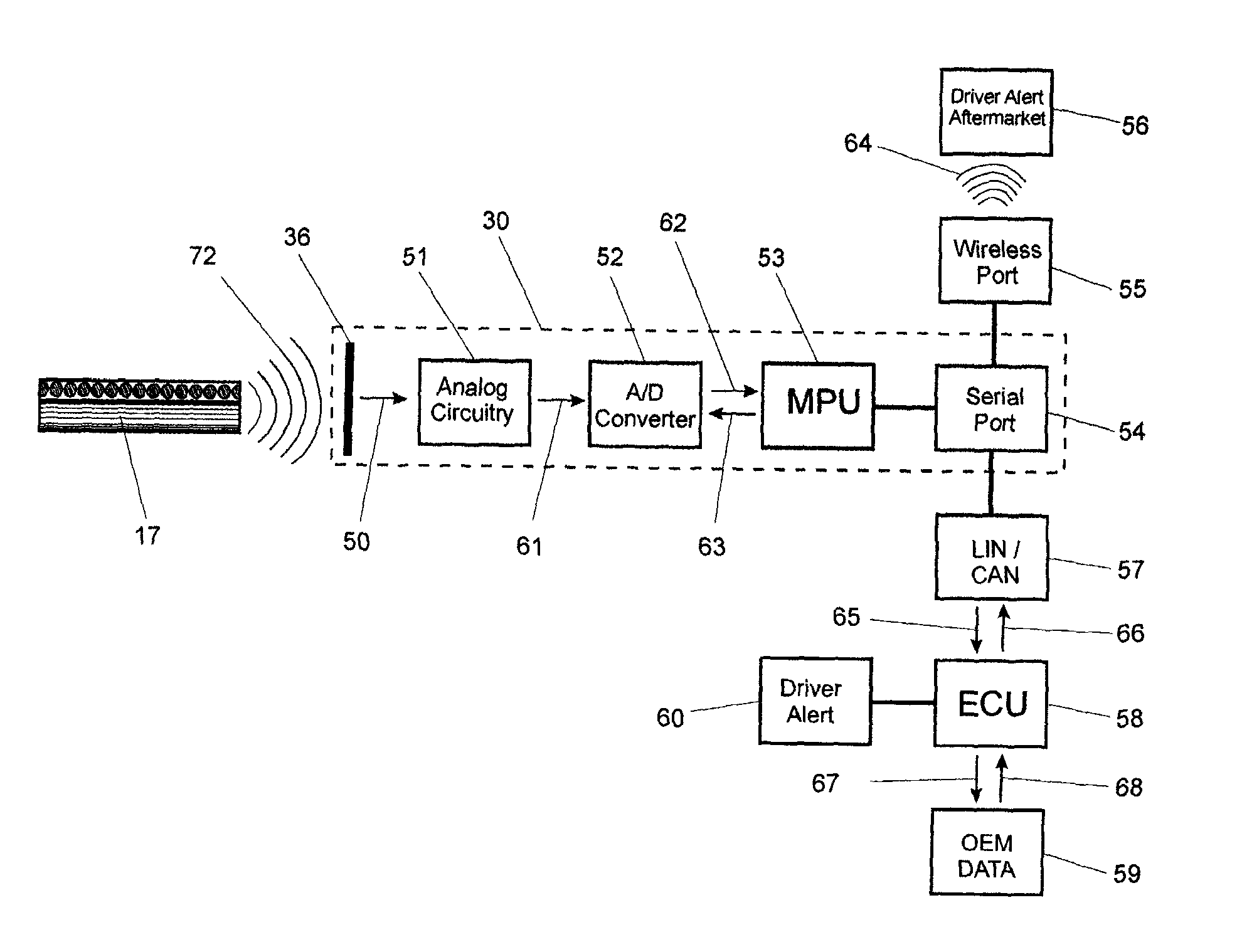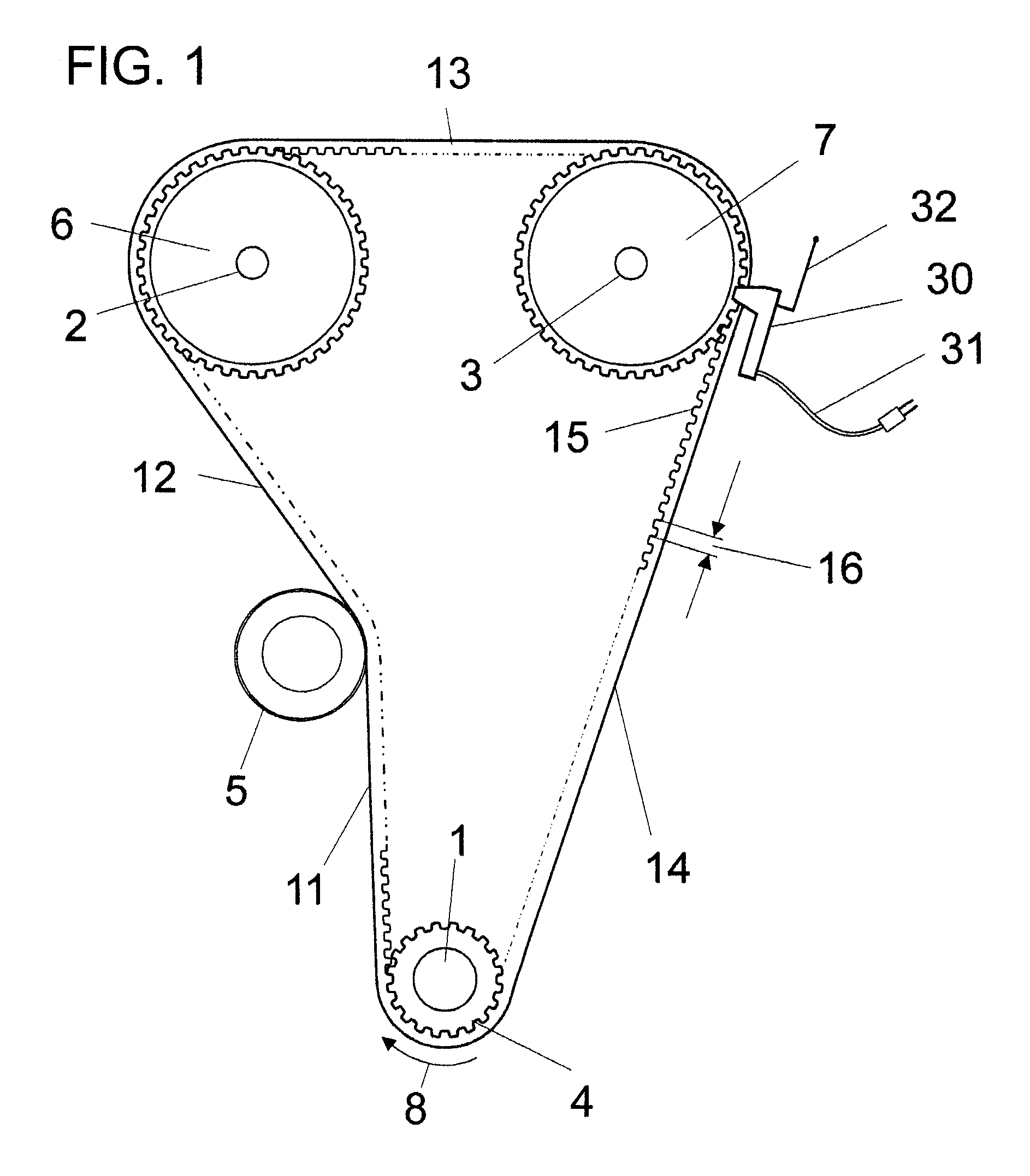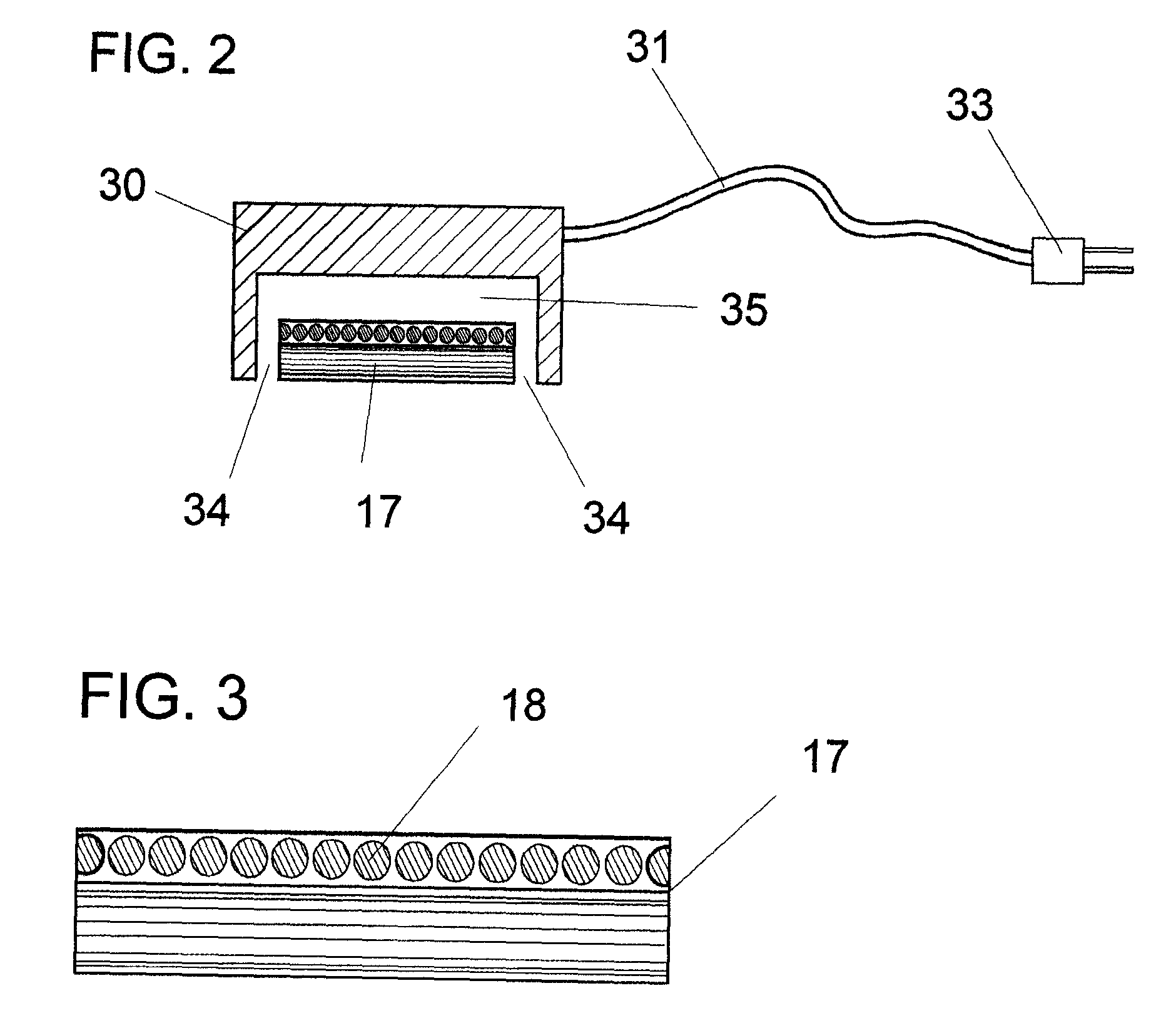Apparatus And Method For Detecting Transmission Belt Wear And Monitoring Belt Drive System Performance
- Summary
- Abstract
- Description
- Claims
- Application Information
AI Technical Summary
Benefits of technology
Problems solved by technology
Method used
Image
Examples
Embodiment Construction
[0012]The invention is better understood from the following detailed description and preferred embodiments in conjunction with the following drawings.
BRIEF DESCRIPTION OF THE DRAWINGS
[0013]FIG. 1 shows an elevational view of a belt drive with a suitable position of the sensing device;
[0014]FIG. 2 shows a sectional view of the sensing device and adjacent belt structure;
[0015]FIG. 3 shows a sectional view of a typical belt structure;
[0016]FIG. 4 shows a side view of a typical belt structure;
[0017]FIG. 5 shows an elevational view of a belt depicting a failure mode when a typical belt is showing exposed fiber cord and typical structural deficiencies;
[0018]FIG. 6 shows the side view of a belt depicting the failure of an individual belt tooth structure;
[0019]FIG. 7 shows an elevational view of a belt drive depicting the typical modes of vibration in the belt span between two components;
[0020]FIG. 8 shows a sectional view of a typical belt structure depicting the preferred perpendicular pl...
PUM
 Login to View More
Login to View More Abstract
Description
Claims
Application Information
 Login to View More
Login to View More - R&D
- Intellectual Property
- Life Sciences
- Materials
- Tech Scout
- Unparalleled Data Quality
- Higher Quality Content
- 60% Fewer Hallucinations
Browse by: Latest US Patents, China's latest patents, Technical Efficacy Thesaurus, Application Domain, Technology Topic, Popular Technical Reports.
© 2025 PatSnap. All rights reserved.Legal|Privacy policy|Modern Slavery Act Transparency Statement|Sitemap|About US| Contact US: help@patsnap.com



